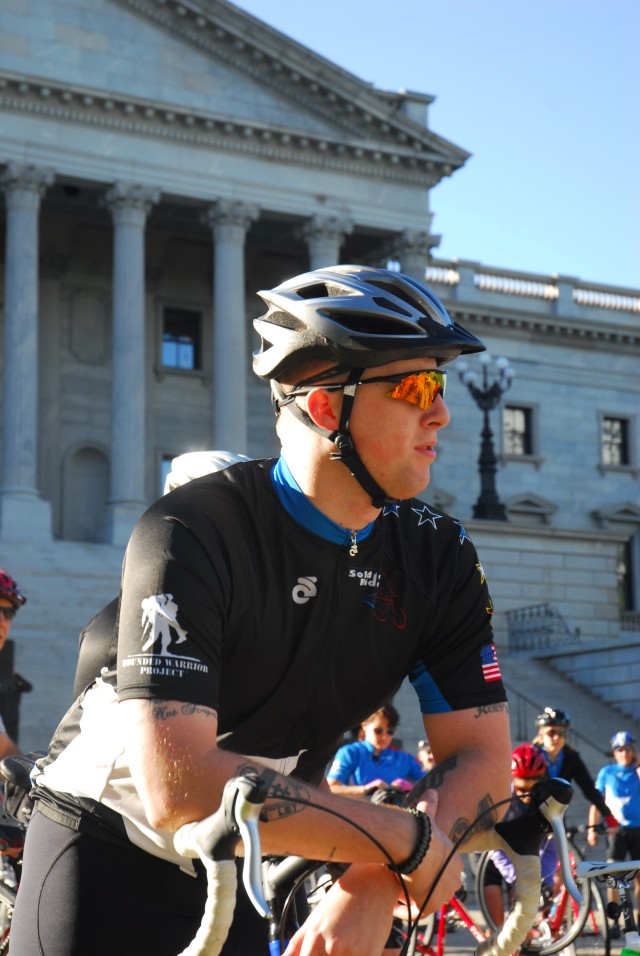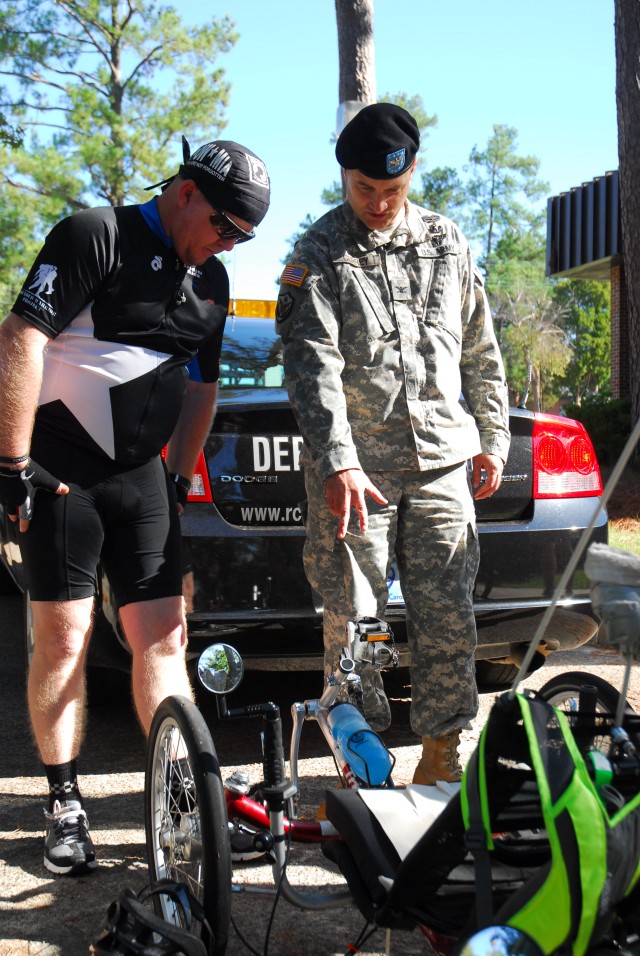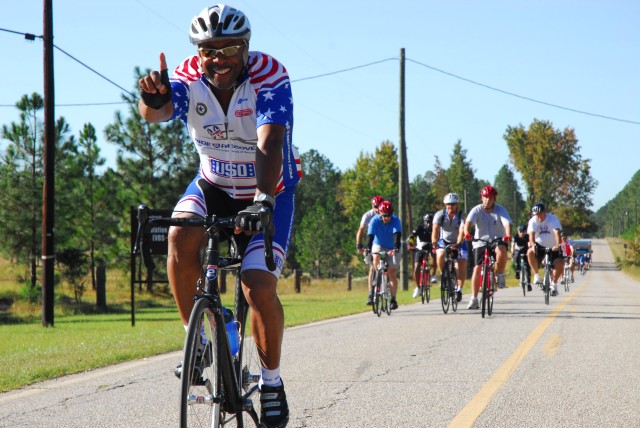FORT JACKSON, S.C. -- Master Sgt. Casey Davis' love for cycling came to an abrupt halt when he was recently diagnosed with Grave's Disease - an autoimmune disease which affects the thyroid gland.
Davis, who is assigned to Fort Jackson's Warrior Transition Unit, got his chance to hop back on the saddle and pedal again during a bicycle ride last week from the state capitol to the installation and back.
Soldier Ride, which is organized by the Wounded Warrior Project, allowed 35 wounded or ill Soldiers the chance to get out and show their strength and resilience.
"I used to ride bikes quite a bit until I got ill,"said Davis, who fell ill months before being diagnosed. "I am so excited to be on a bike again. If I can make it through this ride I will be very happy."
Davis and his fellow comrades did make it through the 20-plus-mile ride, and in turn showed the community and fellow Soldiers that never giving up reaps its rewards.
"Soldier Ride has proven itself to be an excellent program designed to aid in the physical and mental health rehabilitation of service members who have been seriously injured in Iraq and Afghanistan," said Bill Read, Soldier Ride Law Enforcement Coordinator.
Sgt. 1st Class Jeff Norman, a platoon sergeant with the Fort Jackson Warrior Transition Unit, who rode alongside Davis, said seeing wounded warriors participate in the bicycle ride was inspiring.
"You might be having a tough time pedaling, but when you see a double amputee riding up a steep hill, you know you can do it too," Norman said. "It is very inspirational. It makes you go home and cry."
Sgt. 1st Class Ron Doiron, a management analyst for the Fort Jackson Warrior Transition Unit, said events such as Soldier Ride are key to helping wounded warriors rehabilitate physically and emotionally.
"Their wounds are real. These are the people who pay the price every day," Doiron said. "We want to show them there is a road to coping. Rides likes these keep our veterans from closing up at home."
The Fort Jackson WTU will participate in the Ride 2 Recovery Florida Challenge, a bicycle ride from Tampa to Jacksonville, Fla., in mid-November.
"It is not about what they can't do, it is about finding ways they can do," Doiron said. "There are a lot of different levels of injuries among wounded warriors, but as long as there is a will there is a way."
Bicycle safety tips
Fort Jackson offers an ideal environment for bicycle riding. Here are some tips to keep that ride safe:
-- All traffic rules apply: The safest place to ride a bicycle is on the street, where bicycles must follow the same rules as motorists and ride in the same direction. Yield to traffic when appropriate, look before turning and keep an eye out for parked cars.
-- Always wear a helmet: Make sure your helmet is properly fitted. It should fit snugly on your head. The strap should be tight but loose enough to fit a finger between your chin and the strap.
-- Check your equipment: Inflate tires properly, make sure brakes work and always inspect your bike to make sure all parts are secure and working.
-- Make sure you are seen: Day or night, you need to be seen by others. Wearing white clothing does not make you more visible. Wear neon or other bright colors to make sure you are seen. Also wear something that reflects light. If riding at night, make sure you have a light on the front and back of your bike.
-- Adjust your bicycle to fit: Stand over your bike. There should be one to 2 inches between you and the top bar if riding a road bike and 3 to 4 inches if on a mountain bike.
-- Leave the tunes at home: Listening to music while riding impairs your ability to hear traffic and other noises that alert you to dangerous situations.
Sources: IMCOM and National Highway Traffic Safety Administration






Social Sharing